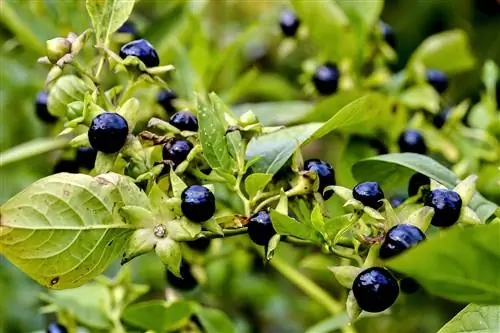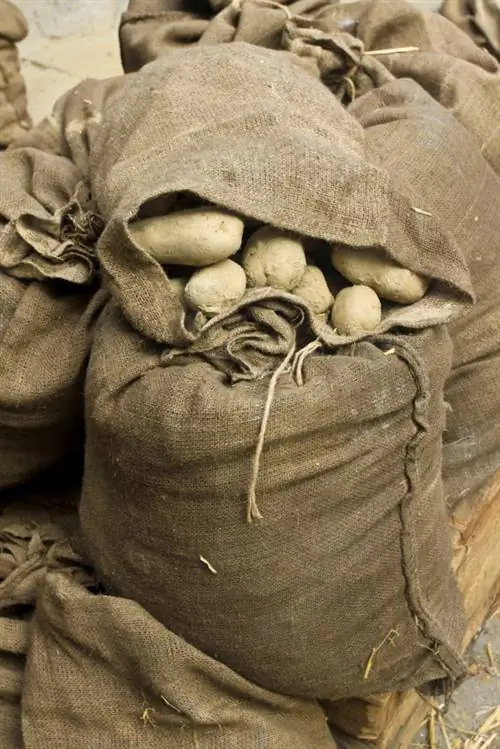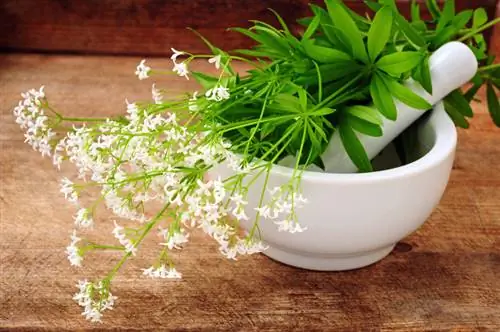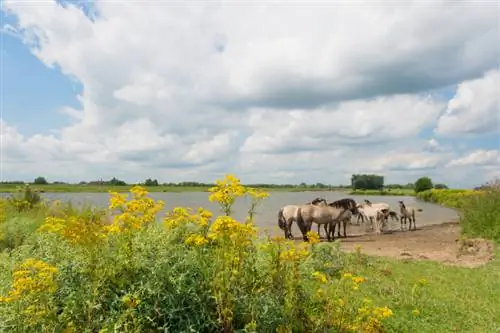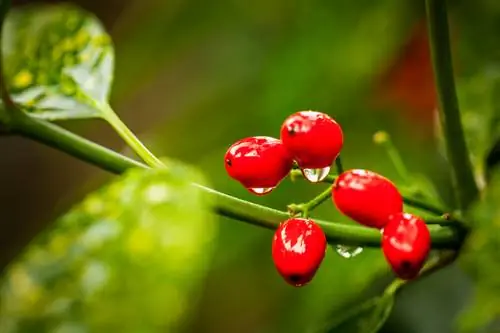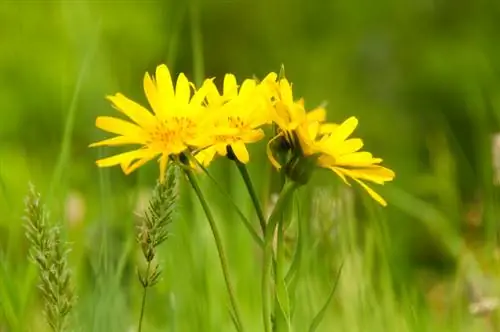- Author admin [email protected].
- Public 2024-01-05 20:48.
- Last modified 2025-01-23 11:19.
Eating blueberries is trendy because the spherical berries are considered a local superfood. Since wild blueberries are often referred to as the better superfood, blueberry picking is back in season.
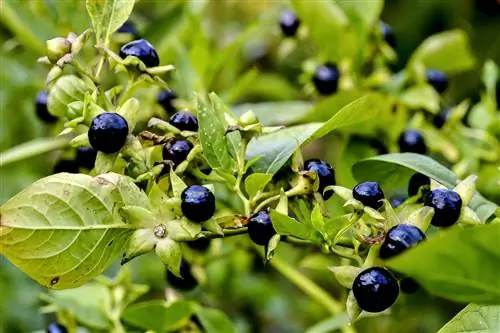
Which poisonous plant are blueberries easily confused with?
In the wild, blueberries are easily confused with thevery poisonous deadly nightshade. The appearance of the berries serves as a distinguishing feature. While belladonna is black and has a shiny surface, wild blueberry is blue-black and not shiny.
Who could be a poisonous doppelganger of the blueberry?
In the wild, there is a risk of confusion when picking blueberries withDeadly nightshade and wild berries.
Black belladonna (Atropa belladonna)
As a nightshade plant, belladonna is poisonous in all parts of the plant. The black berries are spherical, but unlike blueberries they have a lacquer-like, shiny surface.
Blackberry (Vaccinium uliginosum)
The wild berry, also known as the bog berry or cloud berry, is a relative of the wild blueberry (Vaccinium myrtillus). The dwarf shrub grows up to 60 centimeters high. The berries are egg-shaped. In contrast to wild blueberries, the pulp and fruit juice of blueberries are light.
How poisonous is the blueberry lookalike belladonna?
The belladonna is an extremely poisonous plant. In adults, eating ten to twelve berries is enough for alethal dose. In children, just three to four fruits can cause death if the poisoning remains untreated. Since an emergency doctor should be called at the first sign of poisoning (dry mouth), eating the fruits in the wild is strongly discouraged.
What danger threatens from the doppelganger Rauschbeere?
In terms of toxicity, the wild berry is doing much better than its reputation suggests. Because the berries are classified as“suspicious of poison”. After consuming large quantities, symptoms of poisoning such as
- Dizziness
- intoxicating excitement
- Vomiting
- Pupil dilation
watched. However, since no toxic substances were found in the berries, it is suspected that an ascomycete called Monillinia megalospora, which lives parasitically on the fruits, is responsible for the symptoms of poisoning. In terms of taste, the blueberry is not considered to be particularly aromatic, which can lead to taste disappointments when the blueberry is harvested.
Tip
Exercise caution in other people's gardens
Since, in addition to the poisonous belladonna, there are a large number of bushes with black-blue berries that are kept as ornamental plants in the garden, you should not snack on blue berries in foreign terrain. This is especially true for children. Due to the lower body weight, any toxins can be fatal much more quickly than in adults.

